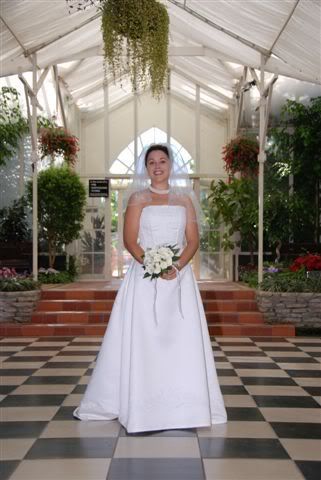Options
Weddings , Flash and natural comparison
I have only done 4 weddings but what's good about the Nikon D80 is the programmable function button which I have set to "cancel flash " which makes it very easy to take a quick shot without flash and then one with flash as a comparison . The flash always seems to give nicer colours while the natural lighting gives better detail . These two were taken about half a second apart . I know the naturallighting shot could benefit from some "levels " adjustment but for the benefit of those learning about flash I left them as-is , no PP .
Besides helping other beginners to learn a bit I would still appreciate constructive criticism from more advanced photographers ...


Besides helping other beginners to learn a bit I would still appreciate constructive criticism from more advanced photographers ...


Nikon D80 , D50 , SB600 , SB800 , Nikon 18-200VR , Tamron 28-75 di 2.8 , Sigma 10-20 f4-5.6 , Nikon 50mm 1.8 . Tamron 17-50 f2.8 , Nikon 70-200 VR f2.8 .
0
Comments
For your pictures, I'd probably want to frame it tighter and bounce the flash off something.
I agree with this-- also a tighter crop. The surroundings don't really add to the photo, in my opinion.
Fill-flash can be fantastic for photos like this-- over on dpreview there were some tips on making fun-foam flash diffusor that looks a bit strange, but works wonders in situations like this. It only costs about five-dollars (US) total to make one yourself too. Search the lighting forum over there for "fun foam" and you'll find tons of info.
Portland, Oregon Photographer Pete Springer
website blog instagram facebook g+
-Exaggerate the backlighting to produce a true silhouette (expose for the light source, fast shutter speed)
-Overcome the backlighting with flash (slow sync in Tv mode so the background doesn't seem so dark in comparison; this is the main issue with your flashed pic here)
-Change metering mode to Center weighted (might need tripod or monopod to get sharp images at slow shutter speed. Light source will overexpose but skin tones will be much more accurate.)
hope this helps
-lynne
50mm 1.4, 85mm 1.8, 24-70 2.8L, 35mm 1.4L, 135mm f2L
ST-E2 Transmitter + (3) 580 EXII + radio poppers
I didn't think the background was under exposed in the flash picture ? Is it really ?
"Urbanaries" , some interesting ideas . I looked through a disc of photos from a professonal photographer a while back and was surprised to see she had her 20D and 5D on "Tv" mode 1/125 the whole time .
How will this differ from "Av" or program mode set at "slow-synch".?
I had also thought that "matrix" metering would be more accurate [ not necessarily with backlighting though ] than centre weighted where a white dress is involved because it makes the white "18% grey" .
Keep the tips coming , I have much to learn !
B: pointed your flash at the ceiling
or
All imho. =P
- Ansel Adams.
It looks just about a stop or 2 underexposed.
Tv is the same as S mode on Nikon cameras, so it will be different from A, in that it controls the shutter speed of the camera manually, while A would just let you control the aperture.
Generally Matrix metering is very accurate, but if you're not getting vibrant skin tones, or you are getting a crappy exposure, there's a reason you have a rear LCD
Then you should switch to spot, or centre weighted, your choice.
Yes, you do have alot to learn. (No offense intended :P)
- Ansel Adams.
I'm guessing just to make sure that the shutter speed never gets so slow as to cause blur, and letting the camera use the flash and aperture to get the right exposure.